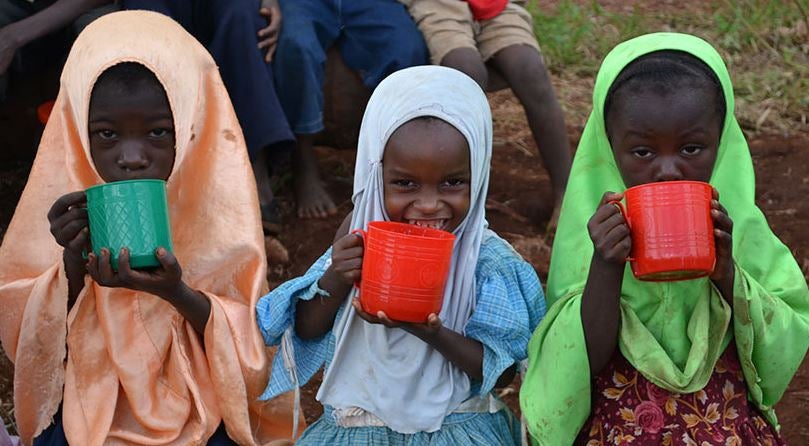
The world is still recovering from the financial and food crises of 2008. A key response, especially in developing countries, was to scale up school feeding programs.
Popular among many governments, school feeding was seen then (and still is) as a safety net for children, especially in poor and food insecure areas. Evidence shows that these programs have the ability to improve the health, nutrition and education of children, and offset lost income for struggling families. In many cases, they can also support local and national economies and food security.
Nowadays an estimated 368 million children – about one in five – receive at least one meal at school daily. However, too often, such programs are weakest in countries where there is the most need. School feeding has been based on food aid, which is not sustainable, since the bulk of the food is not generally purchased in close proximity to assisted schools.
Many governments are trying to improve the implementation of school feeding programs, and more are requesting technical guidance and support to put in place sustainable and cost-effective school programs. In response, in 2009, the World Bank, the World Food Programme and the Partnership for Child Development published a book about school feeding program design and implementation.
School feeding programs are complex
School feeding looks simple but is a complex intervention requiring trade-offs during the design of programs – objectives, targets and modalities for feeding, as well as costs. Countries implement different school feeding program models and different models can co-exist in the same country. There are centralized and decentralized school feeding programs which are managed either by the government or by the private sector.
The complexity of school feeding can also be attributed to the many objectives that programs respond to. School feeding has education, health and nutrition, agriculture and community development objectives. But we know that successful programs are those designed and implemented collaboratively. For instance, in Mali and Haiti, we are working closely with partners to assist governments put in place sustainable school feeding programs with clear education objectives. Today, the Haiti program is feeding about 140,000 children on a daily basis.
Lessons from other countries
Another way we are supporting countries is by presenting governments with lessons learned and best practices from successful programs around the world. Earlier this month, together with the World Food Programme, and the Partnership for Child Development, we launched the “Global School Feeding Sourcebook: Lessons from 14 countries” report.
Done in collaboration with high-level government teams from 14 countries (Botswana, Brazil, Cabo Verde, Chile, Cote D’Ivoire, Ecuador, Ghana, India, Kenya, Mali, Mexico, Namibia, Nigeria and South Africa), the sourcebook compiles concise and comprehensive country case studies. It also documents and analyzes a range of government-led school meals programs to provide decision-makers and practitioners worldwide with the knowledge, evidence and good practice they need to strengthen their national school feeding efforts.
The report analyzes a range of models and trends, including design and implementation, funding and level of community participation. In Ghana, for example, the government uses a digital school meals planner to develop nutritionally balanced school meals using local ingredients.
Another trend is for countries to connect school feeding with local food production and purchase, also known as Home Grown School Feeding. In Cape Verde schools can partner with local businesses such as hotels for extra funds which can be put towards cooking facilities. In short, the report finds that the strongest and most sustainable programs are those that respond to community need, are locally-owned and incorporate some form of parental or community contribution.
Need data on school feeding programs from around the world? Check the SABER scorecard.
Find out more about the World Bank Group’s work on education on Twitter and Flipboard.


Join the Conversation